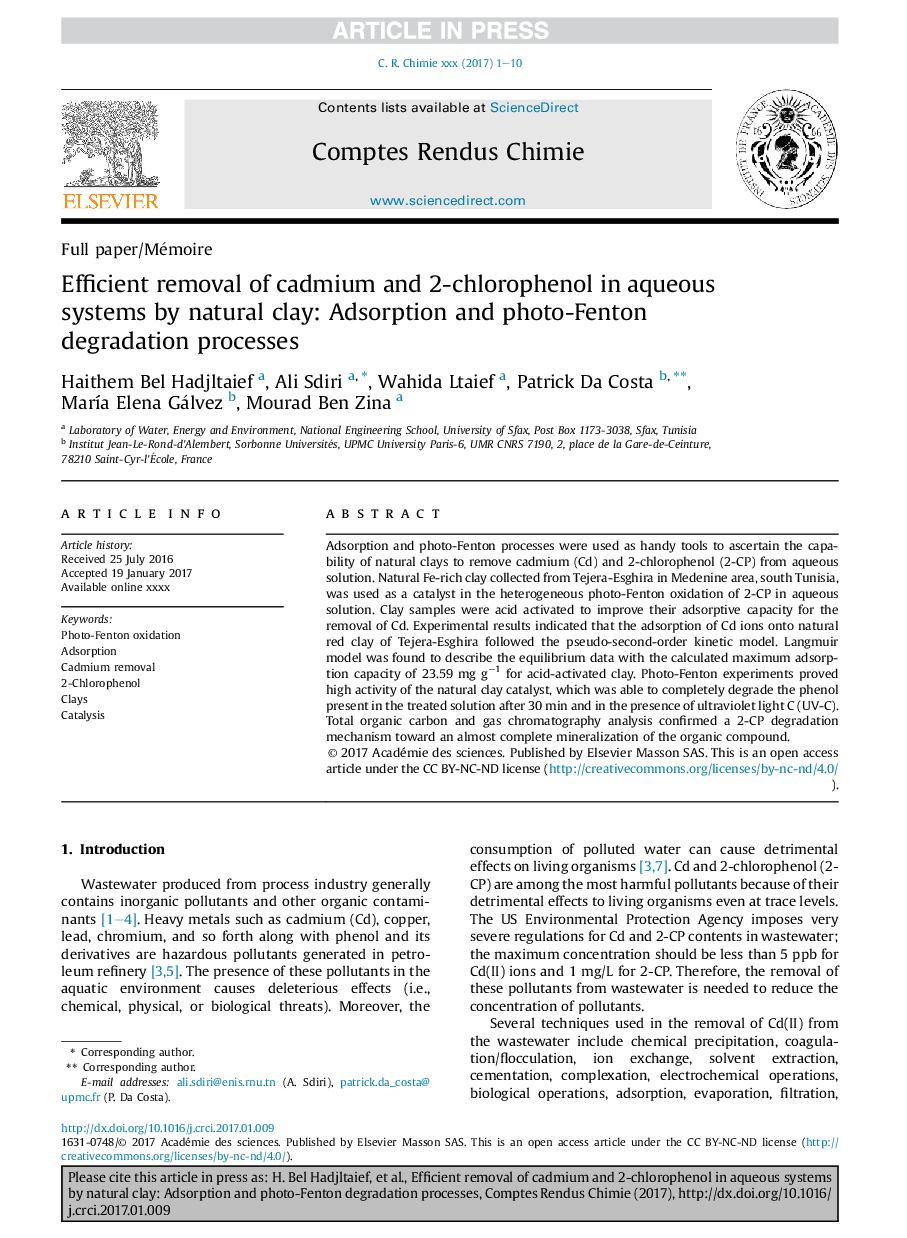| Article ID | Journal | Published Year | Pages | File Type |
|---|---|---|---|---|
| 6594459 | Comptes Rendus Chimie | 2018 | 10 Pages |
Abstract
Adsorption and photo-Fenton processes were used as handy tools to ascertain the capability of natural clays to remove cadmium (Cd) and 2-chlorophenol (2-CP) from aqueous solution. Natural Fe-rich clay collected from Tejera-Esghira in Medenine area, south Tunisia, was used as a catalyst in the heterogeneous photo-Fenton oxidation of 2-CP in aqueous solution. Clay samples were acid activated to improve their adsorptive capacity for the removal of Cd. Experimental results indicated that the adsorption of Cd ions onto natural red clay of Tejera-Esghira followed the pseudo-second-order kinetic model. Langmuir model was found to describe the equilibrium data with the calculated maximum adsorption capacity of 23.59Â mg gâ1 for acid-activated clay. Photo-Fenton experiments proved high activity of the natural clay catalyst, which was able to completely degrade the phenol present in the treated solution after 30Â min and in the presence of ultraviolet light C (UV-C). Total organic carbon and gas chromatography analysis confirmed a 2-CP degradation mechanism toward an almost complete mineralization of the organic compound.
Related Topics
Physical Sciences and Engineering
Chemical Engineering
Chemical Engineering (General)
Authors
Haithem Bel Hadjltaief, Ali Sdiri, Wahida Ltaief, Patrick Da Costa, MarÃa Elena Gálvez, Mourad Ben Zina,
